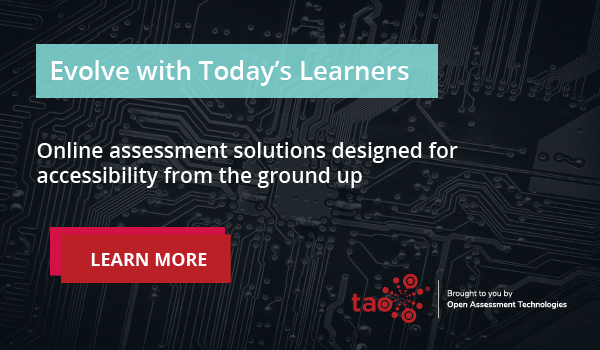Engaging and reaching students at their level are two of the most difficult aspects of teaching. Each class is made up of students from various backgrounds, with different abilities and interests. However, by building student agency through universal design principles, educators can engage students more effectively while at the same time giving students of all abilities the opportunity to learn and grow.
While this may sound overwhelming at first, implementing a Universal Design for Learning (UDL) approach in the classroom can take some of the load off of the teacher, as students begin to take control over their learning. All of this serves to develop a student’s social-emotional learning (SEL) as well by nurturing the student’s self-managment, self-awareness, and decision makings skills, giving students voice and choice in their learning.
Students Want to Have a Voice and Choice in Their Learning
One of the main reasons that students become disengaged from school is that they feel like they have no autonomy over what they are learning. For these students, it seems as if they are just jumping through hoops designed by their teacher or the system with no real-world context. Even for adults, it can be difficult to engage in work that has no apparent connection to bettering our lives. For students, it is no different.
Giving students a chance to choose what they are learning about offers them the opportunity to authentically buy into the learning. Voice and choice are not only about allowing students to choose a topic of interest to learn about; students also can be allowed to make other decisions such as where they want to learn, who they want to work with, how they will show their learning, and why they are participating in the first place.
In making these choices students are empowered to grow beyond expectations and they begin to develop student agency.
What is Student Agency and Why is it Important?
When students have a voice and choice in their learning it is called student agency. To build student agency students must take an active role in their learning by making decisions that directly impact what they will learn about, how they will learn it, and how they will show what they know.
Student agency is critical to the learning process for a couple of reasons. For one, it engages students by igniting their passions and providing a student-centered focus for learning. Two, it embeds real-world decision-making and self-management skills, along with the creativity and inquiry skills that are so highly sought after in today’s workplaces.
What is Universal Design for Learning (UDL)?
Student agency and Universal Design for Learning (UDL) are very closely linked to one another. The principles of UDL include providing students with many opportunities to engage with content, many options for obtaining knowledge, and different ways of expressing what they have learned. In allowing students multiple opportunities and mediums to learn and show learning, teachers can better assess how a student is progressing, while simultaneously boosting engagement.
An added benefit of Universal Design for Learning is that it also enables teachers to create a more inclusive classroom. When students can choose different ways of interacting with the content, it allows them to find a way that works for them, and in doing so, build their agency.
How can UDL help to build student agency?
Universal Design for Learning lays the foundation for increased student agency in two main ways:
– Personalizing learning – student agency is all about the individual student and allowing the student to take an active role in their learning. By providing ample opportunities for voice and choice, UDL allows for a highly personalized learning experience.
– Decision-making and choice – the core principles of UDL allow for student choice in how they receive content, how they engage with content, and how they express learning, all of which give students greater agency over their learning.
How can Technology and Assessment Play a Role in Building Student Agency?
Technology has made building student agency and implementing UDL principles much easier than it was 20 years ago. Today, teachers can link multiple options and opportunities for learning with the click of a button, and students can access this information from anywhere with an Internet connection, at any time of day. This flexibility allows educators to act as facilitators and let students take charge of their learning.
In addition to the easy transfer of information and the access to readily available resources and media, there are also EdTech tools designed specifically to build assessments with student agency and Universal Design for Learning in mind. These assessment tools allow students to interact with a test in various ways, using accessibility tools and keyboard controls, and allow for many different types of student work to be submitted. All of this serves to facilitate the easy implementation of UDL and builds student agency.
Closing Thoughts
By implementing Universal Design for Learning principles and building student agency, educators can better engage their students and lead them to become self-driven learners. The skills that students learn from these experiences, such as how to make decisions and how to solve unique problems, will also directly translate into the workforce and the real world.
Although providing students with so many choices may seem daunting for teachers there are tools available to make the process easier and to seamlessly integrate student choices into your lessons and assessments. Open Assessment Technologies has software available to help you do just that, provide students with voice and choice and build agency, without adding to your workload. To learn more about how Open Assessment Technologies can help contact a representative here.


